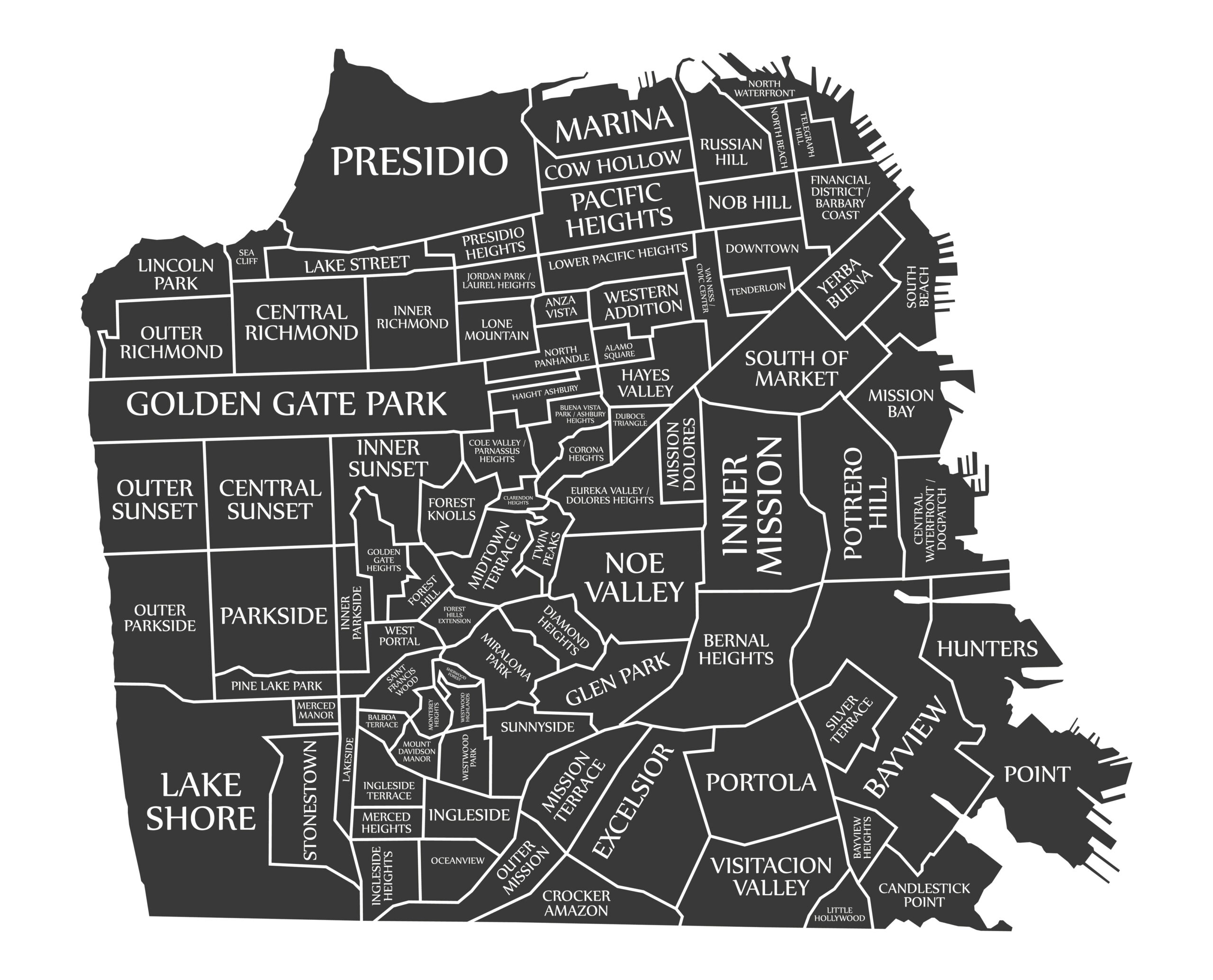Supervisor Myrna Melgar has introduced legislation that aims to incentivize much-needed family-sized housing on the west side of the city. While clearly in line with the City’s housing production goals, it includes some requirements that could make it inapplicable to most of the west side properties it aims to cover.
The draft legislation would create the Family Housing Opportunity Special Use District, which shares a boundary with the Well-Resourced Neighborhoods Map included in the draft 2023-2031 Housing Element. The map covers the entire west side of the city, plus the Marina, Cow Hollow, and parts of North Beach. As drafted, the ordinance would expire eight years after it becomes effective.
The proposed ordinance encourages the construction of two-to-four-unit projects that provide at least two 2-bedroom units within the new special use district. Qualifying projects would be exempt from an otherwise-required conditional use authorization (“CU”), including CUs that typically apply to the demolition of an existing residential unit. Eligible projects would also be exempt from Section 311 notice and the discretionary review process. Obtaining approval of a CU or having a project sent to the Planning Commission by a neighbor via discretionary review creates uncertainty and can add many months to a project’s approval timeline. Taking both CU requirements and Section 311/discretionary review off the table are meaningful incentives.
The legislation does not automatically exempt these projects from CEQA—but small new construction projects should be eligible for Class 3 (new construction of small structures) categorical exemptions.
Specifically, the new rules would apply to projects that construct two-unit buildings (including a two unit building with a third standalone unit outside the proposed building envelope) and three-unit buildings (including a three unit building with a fourth standalone unit outside the proposed building envelope). At least two of the units in a qualifying project must have at least two bedrooms.
Projects must consist of ground-up new construction, and while they would be exempt from the otherwise-applicable density limit (up to four units per lot and not including any permitted accessory dwelling units), projects would not be exempt from the otherwise-applicable height limit for the property in question.
As drafted, the legislation includes several other restrictions that will limit its potential impact:
Qualifying projects cannot demolish a historic resource and must comply with the Residential Design Guidelines and the Planning Code, except for lot-based dwelling unit density limits. While requiring Code compliance in exchange for bypassing Planning Commission review is reasonable, the Residential Design Guidelines are not entirely objective, which will make it difficult for sponsors to assess whether Planning Staff will deem a particular project in compliance with the guidelines. It’s also difficult to imagine how a third or fourth unit constructed outside the main building envelope could comply with the Planning Code’s rear yard and obstruction controls.
Additionally, projects cannot propose the demolition of any of the following:
- Units that are or were subject to a recorded covenant, ordinance, or law that restricts rents to levels affordable to persons and families of lower or very low income within the past five years;
- Units that are or were subject to the Residential Rent Stabilization and Arbitration Ordinance (Chapter 37 of the Administrative Code) within the past five years;
- Units that are or were occupied by lower or very low income households within the past five years; or
- Units that were withdrawn from the rental market pursuant to the Ellis Act within the past 10 years.
The requirement related to the Rent Stabilization and Arbitration Ordinance (i.e., the “Rent Ordinance”) is very limiting as drafted. Most residential units in San Francisco are subject to the Rent Ordinance, which has a rent control component and an eviction protection component.
Units built after June 13, 1979, most single-family homes and condos, and units that have undergone substantial rehabilitation are subject to the Rent Ordinance, but only to the eviction controls (not the rent increase limitations that apply to other units). If the legislation intends to exclude these units and older units subject to rent control limits, there will be nothing left for redevelopment pursuant to the proposed Family Housing Opportunity Special Use District. Protecting affordable units from demolition is a logical policy choice, but hopefully the legislation will be amended to limit this restriction only to units subject to the Rent Ordinance’s rent control protections.
Supervisor Melgar’s proposal has the potential to be an impactful piece of legislation to spur development on the west side of the city and we’ll be keeping an eye on its progress through the legislative process.
Authored by Reuben, Junius & Rose, LLP Attorney Chloe Angelis.
The issues discussed in this update are not intended to be legal advice and no attorney-client relationship is established with the recipient. Readers should consult with legal counsel before relying on any of the information contained herein. Reuben, Junius & Rose, LLP is a full service real estate law firm. We specialize in land use, development and entitlement law. We also provide a wide range of transactional services, including leasing, acquisitions and sales, formation of limited liability companies and other entities, lending/workout assistance, subdivision and condominium work.


